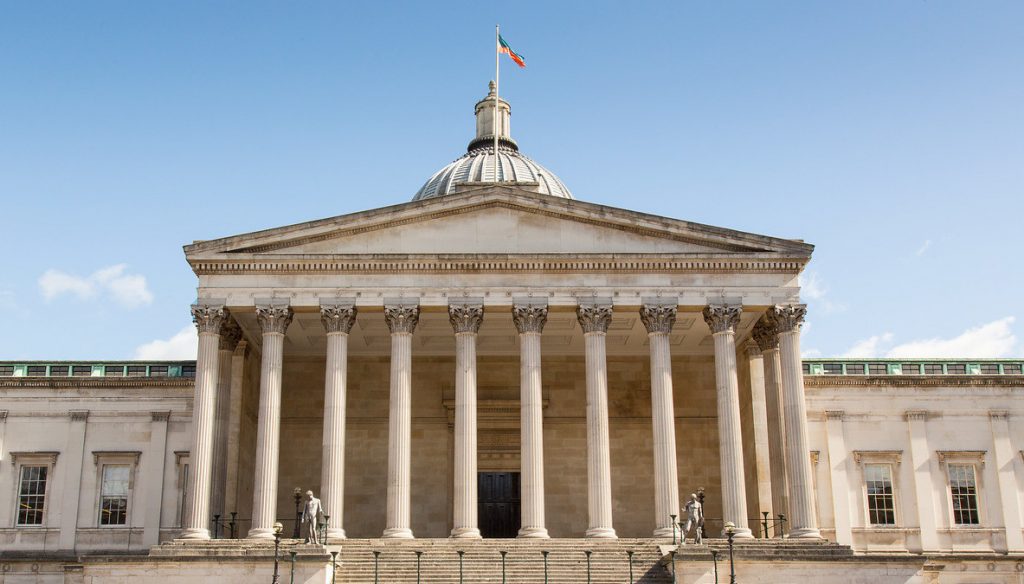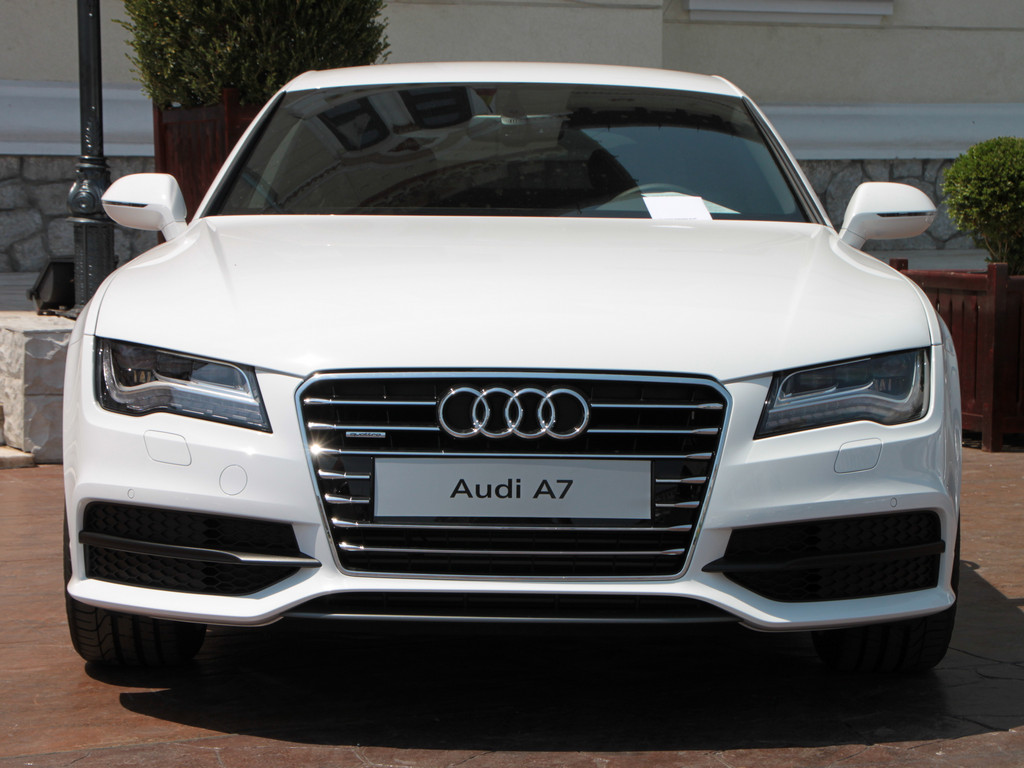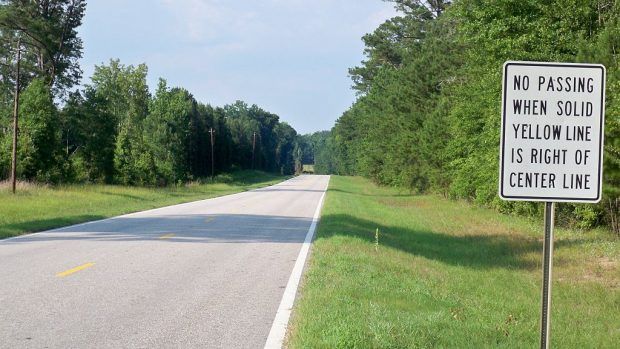
Across the United States, a quiet but profound transformation is underway in how the nation’s vital transportation infrastructure is funded. The long-standing model, which has relied predominantly on taxes levied at the fuel pump, is facing an existential crisis. This shift is not merely an administrative adjustment; it represents a fundamental re-evaluation of how drivers contribute to the upkeep of the roads and bridges they utilize daily, sparking considerable debate and raising complex questions about equity, privacy, and economic impact. At the heart of this discussion lies the concept of a ‘road usage charge,’ a per-mile fee designed to create a more sustainable funding mechanism for an increasingly electrified and fuel-efficient future.
For decades, the motor fuel tax has been the bedrock of funding for road, bridge, and public transit improvements. However, this system, established in 1932, is proving increasingly ill-equipped to meet the demands of modern transportation. As vehicles become more fuel-efficient and electric vehicles (EVs) make significant inroads into the market, a critical consequence has emerged: less funding for roads. This unexpected outcome has forced states and the federal government to seek innovative, albeit controversial, solutions to ensure the safety and longevity of their infrastructure.
Amidst this backdrop, legislative bodies and transportation agencies nationwide are grappling with proposals to implement mileage-based charges. These initiatives aim to restore a direct link between road usage and funding contributions, acknowledging that non-gasoline-reliant vehicles currently do not contribute to infrastructure maintenance through the gas tax. The path forward is fraught with challenges, as these proposals ignite passionate discussions among policymakers, industry stakeholders, and the driving public, who ponder the fairness, feasibility, and potential ramifications of such a significant change to their daily lives.

1. **The Core Problem: The Erosion of Motor Fuel Tax Revenue**For nearly a century, American drivers have paid taxes on every gallon of gasoline and diesel pumped, with this revenue earmarked for maintaining and improving the nation’s road infrastructure and public transit systems. The federal government currently collects 18.4 cents per gallon for gas and 24.4 cents per gallon for diesel, a rate that has remained unchanged since 1993. This stagnation, coupled with inflation, means the revenue has approximately one-third less purchasing power than when the tax was last increased.
State gas taxes further contribute to this funding, though rates vary significantly, from a high of 61 cents per gallon in Pennsylvania to a low of 8.95 cents in Alaska. This combined federal and state framework has historically provided the bulk of transportation funding. However, modern environmental policies and technological advancements are inadvertently undermining this system, leading to substantial funding shortfalls that threaten the quality and safety of infrastructure nationwide.
Crucially, as engines become more fuel efficient, and electric vehicles (EVs) make greater inroads, the volume of gas sold declines. This directly translates to less tax revenue collected, creating an unexpected and growing fiscal challenge. For instance, Illinois faces this exact problem, with the motor fuel tax, which helps pay for road, bridge, and public transit improvements, taking a hit as vehicles require less gas or no gas at all. The U.S. Energy Information Administration notes that Illinoisans already pay the second-highest motor fuel tax in the country after California, at 66 cents per gallon, on top of federal and municipal fuel taxes. This declining revenue stream necessitates a re-evaluation of how transportation is funded.

2. **Introducing the Concept of Road Usage Charges (RUCs)**In response to the dwindling gas tax revenue, states and the federal government are actively exploring new ways to fund transportation and infrastructure, paramount among them being the concept of a Road Usage Charge (RUC). Also referred to as mileage-based user fees, vehicle miles traveled fees, or highway use fees, this system fundamentally shifts the burden of payment from fuel consumption to actual road usage. Instead of paying a tax at the pump, drivers would pay a fee for each mile traveled, creating a more direct link between usage and contribution.
Proponents of RUCs argue that it is a more equitable system, particularly as it addresses the growing number of fuel-efficient and alternative-fuel vehicles that may not be subject to the gas tax. Under the current tax structure, vehicles that don’t rely on gasoline, such as electric vehicles, do not pay the gas tax that helps maintain state infrastructure. This imbalance is a key driver for the proposed change, aiming to ensure that all users contribute fairly to the maintenance of shared infrastructure, regardless of their vehicle’s fuel type or efficiency.
The specific implementation details of RUCs can vary, but the core principle remains consistent. In Illinois, for example, under a mileage-based system, drivers could expect to pay three to four cents per mile, which would come on top of any tolls already being paid, similar to the gas tax. This contrasts with the approximately seven cents per mile drivers pay on Illinois toll roads, according to Marc Poulos, executive director of Operating Engineers Local 150, a strong supporter of such legislation. The goal is to establish a sustained funding source that reflects contemporary vehicle usage patterns.

3. **The National Landscape: States Actively Exploring RUCs**The conversation around Road Usage Charges is far from localized; it is a national phenomenon, with a significant number of states actively exploring or implementing such programs. According to Denise Donohue, CEO of the County Road Association of Michigan, “All but 10 states are moving in this direction,” indicating a widespread recognition of the need for alternative funding mechanisms. This broad engagement underscores the urgency of addressing the infrastructure funding crisis across the country.
Specific states have been identified as either having laws requiring special registration fees for electric and hybrid vehicles – which serve as a precursor or companion to RUCs – or as being ‘on board’ to charge these taxes or fees. This extensive list includes Alabama, Connecticut, Delaware, Florida, Georgia, Kentucky, Maine, Maryland, Massachusetts, New Jersey, New York, North Carolina, Pennsylvania, Rhode Island, Tennessee, Vermont, and Virginia. The sheer volume of states considering or moving towards these charges highlights a collective effort to find sustainable solutions.
Beyond those exploring the idea, several states have already moved beyond theoretical discussions to practical implementation. Oregon and Utah, for instance, have launched well-established pilot programs to test the viability and public acceptance of mileage-based fees. Furthermore, states like Pennsylvania, California, Hawaii, and Virginia have also begun pilot or exploratory efforts, according to the National Conference of State Legislatures. These early initiatives provide valuable insights and lessons for other states contemplating a similar transition, helping to shape the future of transportation funding in the U.S.

4. **Early Adopters: Oregon’s Pioneering RUC System**Oregon stands out as a pioneering state in the implementation of Road Usage Charges, having launched its program in 2015. This initiative, known as OreGO, serves as a significant case study for other states exploring mileage-based funding. Under Oregon’s model, volunteer motorists pay a per-mile charge for their road usage. To ensure fairness and avoid double taxation, these participants receive a non-refundable credit for the fuel tax they have already paid at the pump. This credit mechanism is designed to mitigate concerns about paying twice for road access.
One of the innovative aspects of Oregon’s program is its approach to electric vehicle (EV) drivers. Recognizing that EVs do not contribute to road funding through gasoline taxes, the OreGO program incentivizes their participation with reduced registration fees. This encourages EV owners to join the mileage-based system, ensuring they contribute to infrastructure maintenance in a way that aligns with the program’s equitable goals. The state’s fee structure is also linked to fuel efficiency, with the better the miles per gallon, the higher the cost of registration, encouraging participation in OreGO to receive a discount.
Participants in the OreGO program pay 1.9 cents for each mile driven, with the collected money directly allocated to the state highway fund. To facilitate this, a device on the vehicle tracks the miles driven. For drivers of fuel-powered vehicles, this system also allows them to receive a credit for fuel tax paid and even for remote emissions testing. This comprehensive approach by Oregon demonstrates a practical model for how a mileage-based user fee system can be implemented, addressing both revenue needs and fairness for different vehicle types.

5. **Early Adopters: Utah’s Approach to Mileage-Based Fees**Following Oregon’s lead, Utah has also implemented a similar program to test the viability of mileage-based user fees, positioning itself as another key early adopter in the national discussion around Road Usage Charges. Utah’s system, like Oregon’s, is designed to ensure that all drivers contribute to road maintenance, particularly those in fuel-efficient and electric vehicles who pay less or no gas tax.
In Utah, specific provisions target plug-in hybrid and gas hybrid vehicles, which are required to pay the Road Usage Charge. The annual charges for these vehicles can range from $21.75 to $56.50, depending on their classification. For electric vehicle owners who do not purchase gasoline and therefore do not contribute through fuel taxes, Utah assesses an annual fee of $30.25. This differentiated approach aims to create a more balanced system where contributions align with vehicle usage and environmental impact.
The mechanisms for tracking mileage in Utah’s voluntary pay-per-mile system are similar to those explored elsewhere, often involving odometer readings or devices installed in vehicles. While the specific details of tracking and cost per mile are subject to ongoing refinement, Utah’s program contributes to the growing body of knowledge on how such systems can be effectively administered. It provides valuable experience on the ground, helping to refine the processes and address public concerns, making it an important example for states like Michigan that are considering similar pilot initiatives.

6. **Illinois’s Legislative Push: A Pilot Program for Viability**Illinois is actively confronting its transportation funding crisis with proposed legislation aimed at creating a pilot program for a Road Usage Charge. State Sen. Ram Villivalam, D-Chicago, has introduced legislation to explore the viability of establishing a “road usage charge,” essentially a tax on miles driven. This initiative takes direct aim at the problem of declining motor fuel tax revenue, which is significantly impacting the funding available for road, bridge, and public transit improvements throughout the state.
The impetus behind this push is clear: vehicles that don’t rely on gasoline, such as electric vehicles, currently do not contribute through the gas tax to maintain state infrastructure. Marc Poulos, executive director of Operating Engineers Local 150, a strong supporter of the proposed legislation, articulated this necessity, stating, “Everybody’s been in search of the one-size-fits-all fix… and the real fix is a road usage charge, which is essentially playing off the tollway system.” This highlights the urgent need for a sustained funding mechanism.
The proposed pilot program in Illinois would involve roughly 1,000 motorists signing up through the Illinois Secretary of State’s office. Participants would report their car’s fuel efficiency and mileage to the Illinois Department of Transportation (IDOT). Tracking methods could include a transponder on their car or motorists being allowed to send a photo of their odometer. A key feature designed to alleviate concerns about double taxation is the provision that drivers who paid more in gas tax than they would in mileage would receive a refund, with other program details still to be finalized. Although the initial program might not meet the state’s short-term needs, Poulos emphasized its long-term necessity for funding transportation in Illinois.

7. **Michigan’s Budgeted Pilot: Exploring Future Funding Options**Michigan is poised to join the ranks of states actively exploring Road Usage Charges, with Governor Gretchen Whitmer earmarking significant funding for a pilot program in her FY2026 budget. This proposal allocates $7.8 million to “explore road funding options” and specifically to study a pilot of “potential road usage charge revenue options to provide a stable future base of support for Michigan’s transportation network.” This signals a serious commitment from the state’s leadership to address its substantial transportation funding challenges.
The decision to pursue a pilot program comes after Michigan previously sought, but was unsuccessful in securing, federal grant funding last year to test a pay-per-mile system as a possible fuel tax replacement. Despite that setback, transportation officials continued to advocate for a pilot, and the governor’s recent budget proposal reflects a willingness to proceed. The funding for this pilot would primarily come from a one-time appropriation of $7.7 million from the Michigan Transportation Fund, supplemented by $171,900 of ongoing support.
Denise Donohue, CEO of the Michigan County Road Association, expressed that local road agencies were “pleasantly surprised” by the potential RUC pilot funding. She underscored the prudence of starting a pilot immediately, given that transitioning to a new road funding structure would take years. Donohue also stressed the critical importance of including local road agencies and residents from all over the state in the discussion, acknowledging that “Viewpoints are very different in Northern Michigan versus Metro Detroit, versus Metro Grand Rapids.” Questions regarding mileage tracking, per-mile cost, and initial enrollment criteria are all aspects the pilot program would seek to answer, with the Michigan Department of Transportation (MDOT) ready to “move quickly to establish the road usage charge criteria and course of action” if funding is approved.

8. **California’s Revenue Shortfalls and Pilot Program Findings**California, a state of 39 million people, is confronting a significant fiscal challenge similar to that faced by other states: a projected $5 billion drop in fuel tax revenue over the next decade. This decline is largely attributable to the escalating adoption of electric and hybrid vehicles, which contribute less or nothing to the gas tax. Given that approximately 80 percent of the state’s road repairs have historically been funded through its 59-cent per gallon gas tax—the highest in the nation—this anticipated shortfall underscores the urgency of identifying alternative funding solutions.
In response to this looming crisis, the California Department of Transportation (Caltrans) has concluded a pilot program to thoroughly investigate the feasibility of a per-mile road charge. The study explored various structures for this potential new fee system, including a flat rate of 2.8 cents per mile and a more individualized approach that ties the fee to a vehicle’s specific fuel economy. Different methodologies for reporting mileage were also tested, ranging from straightforward odometer readings to more advanced plug-in devices designed to precisely measure miles traveled.
Despite the clear need for new funding mechanisms, the proposal for a statewide mileage tax in California has encountered considerable public skepticism and political opposition. Residents have voiced strong reservations, with one San Diegan expressing a firm “no” to the idea, citing personal financial strain. Assembly Member Carl DeMaio, a prominent critic, characterized the mileage tax as a “money grab,” estimating that the average Californian could face annual costs ranging from $900 to $1200 under such a system. He further argued that the charge would disproportionately affect working and lower-income families who often contend with longer commutes, rendering it regressive and inherently unfair.

9. **Washington State: The Landscape of Public Resistance and Education**Washington state provides a compelling case study of the formidable public resistance that Road Usage Charge proposals can engender. The state witnessed an “unprecedented” outpouring of opposition, with 20,000 individuals signing up to express their disapproval of a pay-by-mile plan within a week. This significant public outcry underscored a fundamental challenge: a widespread lack of understanding regarding the mechanics and implications of the proposed legislation.
Reema Griffith, executive director of the Washington State Transportation Commission (WSTC), an entity that has been studying RUCs for nearly 13 years, acknowledged that this feedback signaled a critical need for extensive public education. The inherent complexity of shifting away from a century-old funding model, coupled with the natural apprehension toward significant change, has fostered considerable confusion among the driving public. The WSTC’s ongoing efforts aim to clarify misconceptions, particularly the notion of paying twice for road use or incurring hundreds of extra dollars in fees.
Crucially, proponents of the Washington RUC system have sought to address key public concerns directly. They emphasize that drivers would not be compelled to install tracking devices in their vehicles, with odometer readings serving as a primary method for mileage reporting. Furthermore, the funds generated would be constitutionally protected, similar to the gas tax, ensuring their dedicated use for road maintenance and preservation. The phased implementation plan in Washington outlines that mandatory participation for electric and hybrid vehicle owners would begin in 2029, followed by gas cars exceeding 40 miles per gallon in 2031, allowing ample time for public understanding and system refinement.

10. **Deepening Concerns: The Privacy Paradox of Mileage Tracking**Among the most contentious aspects of Road Usage Charges is the profound concern surrounding privacy and the methods used to track miles driven. Drivers frequently express unease about the prospect of installing “open devices” that could monitor their movements, perceiving such technology as an invasion of personal privacy and a potential vulnerability for unauthorized data access. The inherent requirement for Departments of Transportation (DOTs) to collect mileage data, particularly for different road types, necessitates a robust framework that unequivocally safeguards driver privacy.
The potential use of on-board diagnostics (OBD) devices for mileage tracking raises specific apprehension, as it creates an “open network” that could theoretically expose vehicle information. While a device akin to an E-Z Pass might offer a more palatable alternative, its susceptibility to removal or blocking introduces practical challenges for comprehensive data collection. This complex interplay between the need for accurate data and the imperative for privacy protection remains a significant, unresolved issue in the broader RUC discussion.
Industry developers and proponents of RUCs have often suggested that a third party, rather than the government directly, would be responsible for tracking mileage and processing payments. This approach, while intended to alleviate fears of government surveillance, introduces its own set of concerns. The notion that a government contractor would collect sensitive mileage data, deduct charges from a user’s credit card, and then remit payments to states raises questions about the security of this data and the potential for it to be sold or utilized for purposes beyond infrastructure funding. While telematics or advanced tracking systems may be offered as an option for drivers, such as for those who wish to avoid paying for out-of-state miles, the assurance that these technologies will not become mandatory is a critical factor in public acceptance.

11. **The Equity Imperative: Addressing Financial Burdens on Drivers**Beyond privacy, a central point of contention for Road Usage Charges revolves around the principle of financial equity. Critics, particularly in California, highlight the regressive nature of a mileage tax, arguing that it could disproportionately impact lower-income individuals and working families who often reside further from their workplaces and therefore accrue more miles. Assembly Member Carl DeMaio’s estimate that average Californians could face annual costs of $900 to $1200 under an RUC system underscores the potential for substantial financial burden on those who can least afford it.
Another significant equity concern pertains to the disincentive this new charge might pose for electric vehicle (EV) adoption. While RUCs aim to ensure all drivers contribute to road maintenance, a shift from no gas tax contribution to a per-mile charge could mean that EV owners, who currently pay around $225 in annual fees in some states, might face higher overall costs. This raises questions about how to balance infrastructure funding needs with environmental policy goals, particularly regarding the transition to cleaner transportation. For hybrids, which already pay some gas tax, the addition of a mileage charge could lead to perceptions of double taxation.
Proponents, such as Reema Griffith of Washington’s WSTC, frame RUCs as a necessary step to “level the playing field,” ensuring that all vehicle users contribute fairly to the upkeep of shared infrastructure. This perspective acknowledges that those who currently pay little or no gas tax, particularly EV drivers, will likely experience a “small uptick” in their contributions. While this might translate to an additional $30 per year for the average Washington driver after gas tax credits, the fundamental argument is that neglecting sustainable funding will lead to severely degraded roads, potentially even turning some to gravel, a consequence deemed far more costly in the long run.

12. **Repositioning RUCs: A Vision for Sustainable Infrastructure Funding**The ongoing debate surrounding Road Usage Charges necessitates a strategic repositioning of this funding mechanism within the national infrastructure dialogue. Rather than being viewed as a last resort or an additional tax burden, RUCs must be presented as the most sustainable and equitable user fee for the future of the nation’s transportation infrastructure. This shift in perception is critical for garnering the necessary political and public support for such a transformative change.
Advocates for mileage-based funding propose that toll-friendly organizations should actively collaborate with state transportation departments and other entities committed to replacing the per-gallon gas tax with per-mile charges. This unified front is essential to educate policymakers and the public on the long-term benefits and necessity of RUCs. The current system, heavily reliant on a declining gas tax, is proving increasingly incapable of meeting the escalating demands for road maintenance and new infrastructure, making a new approach imperative.
Central to this repositioning is the argument that RUCs offer a direct customer-provider relationship, a model often seen with tolled highways. Unlike gas-tax-funded facilities where state DOTs might view legislators as their primary “customers,” toll operators tend to view motorists and truckers as their actual customers, incentivizing them to provide high-quality, responsive service. This direct accountability, coupled with the contractual assurance of long-term maintenance often embedded in tolled projects, presents a compelling case for RUCs as a superior funding model that addresses deferred maintenance issues prevalent in many states.

13. **A Phased Transition: Strategic Implementation for National Acceptance**Implementing a nationwide Road Usage Charge system is a monumental undertaking that necessitates a carefully considered, phased approach rather than an abrupt, “big bang” transition. Experts suggest that the introduction of RUCs should be meticulously managed to clearly replace existing state fuel taxes, not merely add another layer of taxation. This deliberate strategy is vital for addressing public apprehension about double taxation and for ensuring a smooth, acceptable transition for drivers.
One strategic starting point for this transition is the conversion of limited-access highways, many of which are already tolled. These existing tolls could be reformulated and presented to drivers in per-mile terms, with provisions for annual inflation adjustments. As non-tolled Interstates or freeways are subsequently converted, a crucial component of the plan would be the provision of refunds for state fuel taxes paid by vehicles utilizing and paying the new per-mile charges. This mechanism directly refutes the common claim that per-mile charges would be an additional tax.
Converting limited-access highways first offers several compelling advantages. Firstly, these highways account for approximately one-third of all U.S. vehicle miles traveled, allowing for a substantial fraction of total vehicle-miles to be covered relatively quickly. Secondly, this approach can leverage existing and widely accepted all-electronic tolling technologies, minimizing the need for new, potentially controversial vehicle technology. Lastly, by immediately providing refunds for state gas taxes, the system demonstrates its commitment to replacing, rather than supplementing, current fuel-based contributions, thereby enhancing public trust and acceptance.

14. **Beyond the Pilot: The Path to a Resilient National Transportation Network**The comprehensive exploration of Road Usage Charges, from foundational challenges to strategic implementation, underscores a singular truth: the nation’s transportation infrastructure requires a sustainable, long-term funding solution that moves beyond the dwindling gas tax. While pilot programs in states like Oregon, Utah, Illinois, Michigan, California, and Washington have provided invaluable insights into the practicalities and public sentiments surrounding RUCs, the ultimate goal is a resilient national network supported by a robust, equitable funding model.
Achieving this vision necessitates demonstrating the viability of RUCs in one or two states that can serve as exemplars for others. States that have already undertaken detailed Interstate tolling feasibility studies, such as Indiana or Michigan, are well-positioned to lead this transition. Their success would provide concrete evidence of the efficacy and public acceptance of a phased, mileage-based funding system, encouraging widespread adoption across the country.
Ultimately, the path forward involves a collaborative effort among various stakeholders—highway construction associations, public-private partnership advocates, and tolling organizations. These groups play essential roles in educating legislatures, state transportation officials, and the public about the benefits of RUCs as a dedicated user fee system. By repositioning tolling and per-mile charging not as an imposition, but as a critical investment in the future quality, safety, and capacity of American roads and bridges, the nation can secure a transportation legacy for generations to come.



